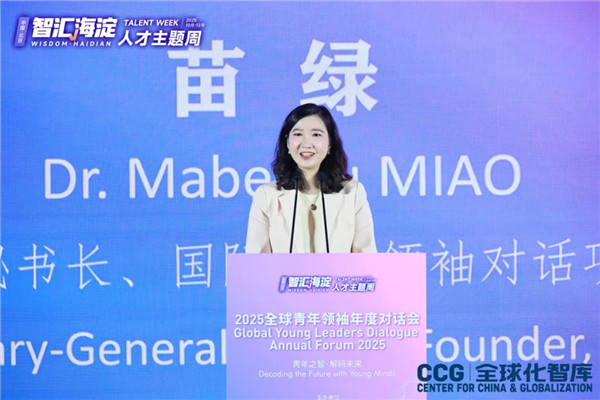Wang Huiyao: Reform the WTO for a post-coronavirus world
May 14 , 2020Reform the WTO for a post-coronavirus world. The global economy needs a champion to lead it out of the crisis
◆ Collapsing trade must be rebuilt to spur recovery. The WTO can work on addressing trade restrictions on key supplies in the short term, and lead discussions to lower tariffs and facilitate e-commerce and agricultural trade in the long term
By Wang Huiyao | President of
the Center for China and Globalization(CCG)
In 1941, at the height of World War II, Winston Churchill and Franklin D. Roosevelt met secretly in a desolate bay off Newfoundland. Over the next four days, they thrashed out what would become one of the most important documents of the 20th century: the Atlantic Charter. It laid out principles for the post-war order, key among which were economic cooperation and a trading system open to all.
Even as war raged, there was good reason to worry about the role of trade in the peace that would follow. A decade before, the Great Depression had seen a vicious spiral of protectionism, economic hardship and nationalism wipe out two-thirds of world trade and sow the seeds of war. By contrast, after 1945, collective arrangements that grew out of the Atlantic Charter fed a virtuous cycle of openness, trade, prosperity and stability.
Scholars now see international trade as a key contrast between interwar instability and post-war recovery. Trade was also crucial after the 2008 financial crisis, enabling countries to feed off each other’s growth and offsetting fiscal and financial pressures.
History shows that trade can support recovery from the global calamity we are living through – it will help balance global supply and demand, and fuel long-term growth. The steps we take to limit or liberalise trade can profoundly affect our course out of the coronavirus crisis.
There is a steep hill to climb. Trade has cratered as factories and borders close while demand and trade financing shrink. The World Trade Organisation expects global trade to drop by between 13 per cent and 32 per cent in 2020. The latter decline is on par with that seen in the first three years of the Great Depression.
Government actions may make things worse. States have already turned inward and begun blame games that hinder cooperation. Around 80 countries are limiting exports of essential goods such as food and medical supplies. Such measures may proliferate and worsen shortages.
The Covid-19 pandemic has also increased calls to reshore production. Some governments may be tempted to raise tariffs to replace lost revenue. Such actions go against free trade.
Without effective global mechanisms, recession can breed protectionism. Initially, trade began to recover after World War I. But dismal conditions triggered a wave of protectionism which the newly formed League of Nations was unable to stop.
By contrast, post-war institutions such as the 1947 General Agreement on Tariffs and Trade (GATT) helped to spur trade liberalisation and prevent backsliding in times of stress.
This underscores how trade-led recovery can be fragile and needs institutional support.
The WTO is the obvious solution. Like other global institutions, it has been weakened by years of deadlock and fallen behind the reality of global integration. But Covid-19 has created the need and will to reboot reform and haul the WTO into the 21st century.
Experts explored ways to do this at a recent webinar organised by the Centre for China and Globalisation. Participants included former WTO director general Pascal Lamy, current deputy director general Alan Wolff, and the former chair of the WTO’s Appellate Body James Bacchus.
In the short term, the WTO should address trade restrictions to ensure essential supplies can get to where they are needed. As Lamy pointed out, a certain degree of “precautionism” – legitimate safeguarding of citizen needs – is to be expected. But mechanisms are required to ensure this is done in a transparent and coordinated manner and doesn’t slide into more harmful forms of protectionism.
The WTO should launch sectoral negotiations to lower tariffs on pandemic-related goods such as medical supplies. We need to address non-tariff barriers and fully implement the Trade Facilitation Agreement to help overcome logistical bottlenecks exacerbated by the pandemic.
Broader reforms to support long-term recovery are also important. For example, completing the WTO’s e-commerce negotiations has become a priority as billions go online to shop, study, work or seek health care.
Agricultural trade has been the thorniest part of the WTO agenda. But looming economic and food crises have increased willingness to find a way forward. The World Bank estimates that Covid-19 could push 49 million people into extreme poverty in 2020. Levelling the playing field on agricultural trade would help address this problem and make food supply chains more resilient.
The importance of WTO reform is clear. The question is whether it is possible. The WTO secretariat can play a bigger role in driving change. Adjustments like forming a Covid-19 task force and using more flexible plurilateral agreements would also help.
Ultimately though, the WTO remains a membership-driven organisation. Real change requires that major powers play ball. This has proved challenging in recent years, but Covid-19 has widened the realms of political possibility.
We live in a different world to the one in 1941, one that is more multipolar and interconnected than ever. The fate of free trade will not be shaped by two men on a boat. But we do need to recapture some of the leadership, pragmatism and spirit of cooperation that forged post-war multilateralism. In particular, whether China and the US can work together is crucial.
Open trade is not a magic remedy to our economic woes. But it underpins many issues that will affect our post-pandemic world. If we can reinvigorate the WTO, it can be an institutional catalyst for recovery and cooperation. The contrasting experiences of the interwar and post-war eras show the stakes could hardly be higher.
Topical News See more






